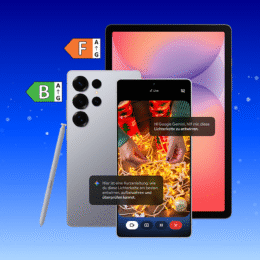einerseits ist die Begeisterung über das Web 2.0 groß und es kommt bei den Nutzern recht gut an. Siehe zB „Alles neu – das Web wird sozial„. Auf der anderen Seite passend dazu aber ein Artikel auf dem O’Reilly Radar Blog „The Three Filters: How to Listen to Users„:
In March I had a phone call with Liz Goodman of Intel. In passing, while we were discussing Where 2.0, she said that in what O’Reilly does there’s an implicit incorrect assumption that what’s good for the alpha geek is good for the average user. Alpha geeks have different problems, different knowledge, and different skills than the average user. Selling software to the mainstream based on the needs of the early adopter is an exercise doomed from the get-go…
If you want to know the problems your users face, the way they use your product, and how well a given solution works for them, you have to talk to them. You’ll have to conduct research, listen to what they say, and critically evaluate to find actionable signal in the noise. No matter how hard it is to figure out what users need, you can’t learn it by speaking to alpha geeks. But you won’t get hot technology tips from users, either. Know who you’re talking to, weight what they say accordingly, and be sure you’ve talked to everyone. You must filter and weight these inputs according to who they came from and what they’re saying….
The lesson is that if you’re going to build a better mousetrap, you have to approach the problem from both sides: technology and user needs. If you ignore technology, you’ll build your mousetrap from cheese. If you ignore users, you’ll catch people instead of mice.
Ich denke, diese These trifft voll und ganz zu. Einerseits bekommt man am ehesten von Alpha Geeks ein Feedback, wenn es sich um einen neuen Webservice handelt, da sich diese sehr intensiv im Netz bewegen, doch andererseits muß man in der Lage sein, für die breite Masse der User seinen Service zu verbessern. Das kennen sicherlich viele: Die Entwickler einer Plattform bauen technisch sehr spannende Dinge ein, doch häufig geht das am normalen User vorbei. Nennen wir es Selbstverliebtheit, aber treffender wäre wohl der Begriff Experimentierfreude. Ein weiterer Mann im Team, der nix von IT versteht, dafür aber eher das Ohr am Markt hat, fehlt häufig.
Wie aber den Markt lesen, wenn man keinen Mann an Bord hat, der ein Näschen dafür hat? Passend dazu die mögliche Antwort von Forrester:
„Technology has given consumers an option to tune businesses out — and tune each other in,“ says Forrester Research Vice President and Research Director Chris Charron. „On the flip side, technology has given businesses an opportunity to gain greater customer insights at a lower cost. These insights give businesses an opportunity to use consumers‘ ideas and creativity to drive their innovation of products, services, marketing, and design.“ Effective businesses are re-orienting their innovation process from an authoritarian „top-down“ approach to more of a „bottom-up“ one using technologies — such as smart point-of-sale systems — and insights from consumer-to-consumer communication — such as blogs and social networking sites — to incorporate a higher level of customer input into the innovation process, an approach Forrester calls „consumer-driven innovation.“
Update: Siehe dazu auch work.innovation Blog
















